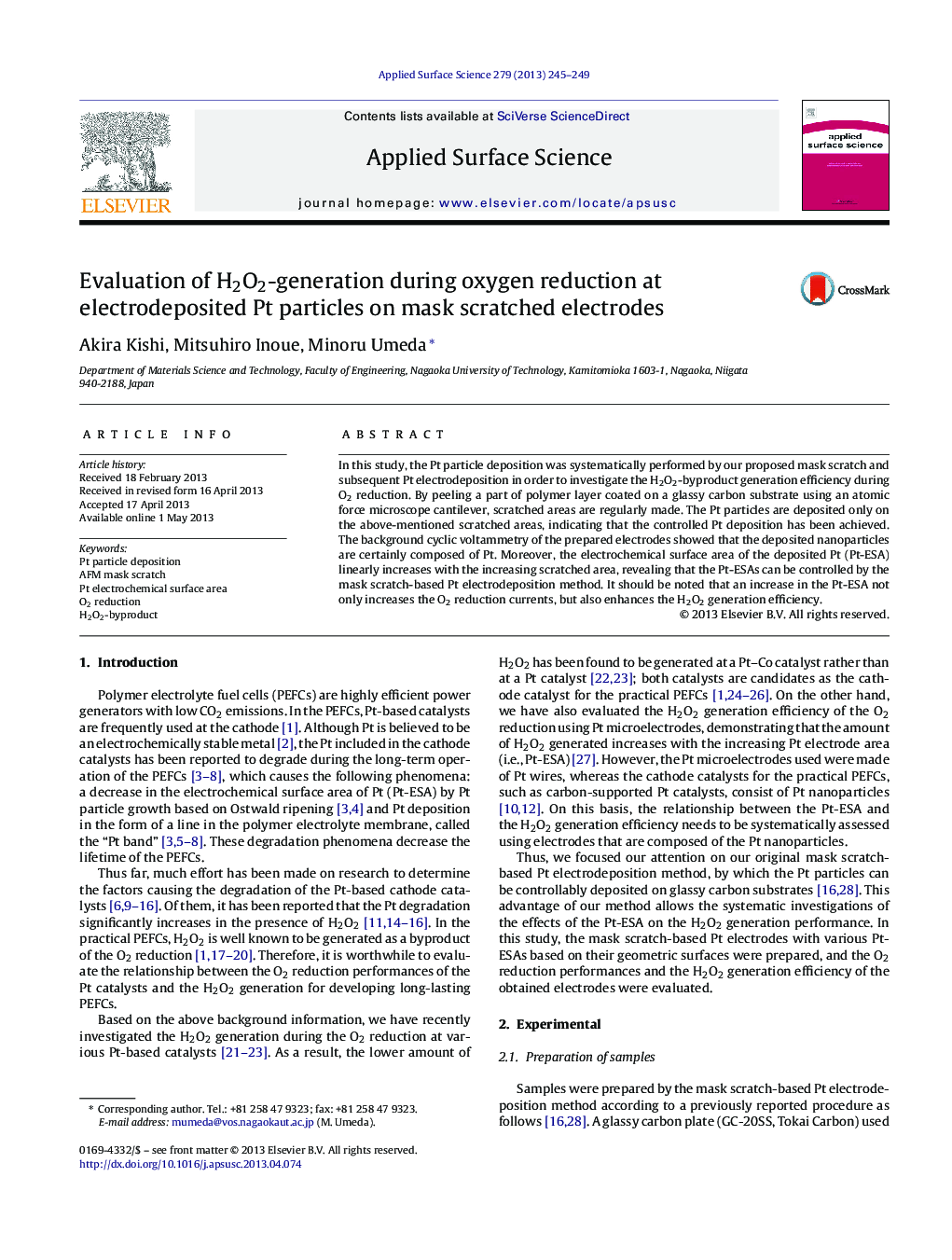| Article ID | Journal | Published Year | Pages | File Type |
|---|---|---|---|---|
| 5354281 | Applied Surface Science | 2013 | 5 Pages |
Abstract
In this study, the Pt particle deposition was systematically performed by our proposed mask scratch and subsequent Pt electrodeposition in order to investigate the H2O2-byproduct generation efficiency during O2 reduction. By peeling a part of polymer layer coated on a glassy carbon substrate using an atomic force microscope cantilever, scratched areas are regularly made. The Pt particles are deposited only on the above-mentioned scratched areas, indicating that the controlled Pt deposition has been achieved. The background cyclic voltammetry of the prepared electrodes showed that the deposited nanoparticles are certainly composed of Pt. Moreover, the electrochemical surface area of the deposited Pt (Pt-ESA) linearly increases with the increasing scratched area, revealing that the Pt-ESAs can be controlled by the mask scratch-based Pt electrodeposition method. It should be noted that an increase in the Pt-ESA not only increases the O2 reduction currents, but also enhances the H2O2 generation efficiency.
Keywords
Related Topics
Physical Sciences and Engineering
Chemistry
Physical and Theoretical Chemistry
Authors
Akira Kishi, Mitsuhiro Inoue, Minoru Umeda,
